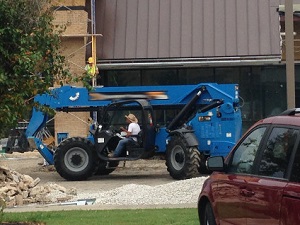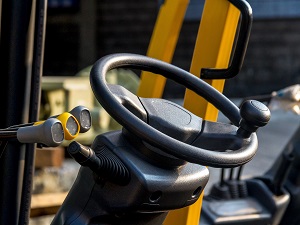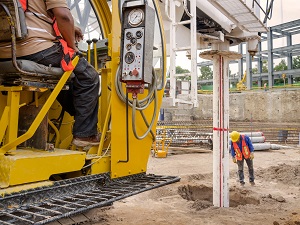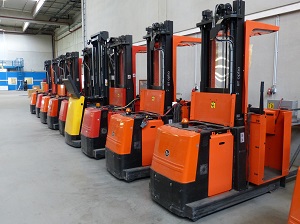Heavy equipment is necessary for so many jobs, but with large equipment comes even more responsibility and challenge. There are many safety guidelines to follow when working with heavy equipment, as moving machinery can cause serious bodily harm. According to the U.S. Bureau of Labor Statistics, 1,008 fatal injuries in 2018 were due to construction, while transportation and warehousing accounted for 874 fatal injuries. OSHA states that 1 out of every 10 construction workers is injured annually. The National Safety Council estimates a loss of 103,000,000 work days lost annually in 2018. With such revealing and negative statistics concerning the dangers in the job field, how can workers safely handle heavy equipment?

Inspect Equipment Before Use
Equipment should be inspected before each use to ensure that it is in good operating condition. Confirm that fluid levels are satisfactory and that there are no cracks or damage on any of the components. Tires should have plenty of tread and any attachments to the overall machine should be securely attached.
Once the equipment has started up, ensure that the lights and alerts are all working properly and that there are no warning lights on. Confirm that the equipment extends and works as necessary and if the cab rotates, ensure that it works before using the machine. Of course, any equipment or machinery that is not working suitably needs to be fixed immediately or removed from service until repairs can be completed.

Be Aware of Surroundings
Being aware of one’s surroundings is especially necessary for those working with heavy equipment. Not only be aware of where fellow co-workers or any other people are, but be aware of overhead wires, underground utilities, or any other obstacles that could cause damage. Operating heavy equipment requires observation and good judgement.
Equipment Operator Training
An operator should always undergo equipment operator training before using any heavy equipment. Classroom and hands-on training provide a comprehensive training program that can suitably prepare an operator for handling large equipment. There are also common sense rules to follow, like wearing a seat belt, which can save one's life in case of emergency. Entering and exiting equipment and maintaining the vital three points of contact when doing so, can prevent many serious injuries from occurring. Additionally, one should avoid entering or exiting equipment that is on and in use. Engage the parking brake, remove the keys, and never jump to exit equipment to prevent serious bodily harm.

Use Equipment Only for the Intended Use
Heavy equipment, as well as large industrial machinery, has a limited range of use and one should never use any equipment or machinery outside of their recommended uses. The limitations on each machine are there for a purpose, and one can easily compromise their safety by not following the guidelines. For heavy industrial equipment, like metal lathes or overhead cranes the intended use is very clear and necessary. Using any heavy equipment outside of the recommended purpose becomes hazardous and unnecessary.
Of course, there are a myriad of other common-sense rules to be reminded of when using heavy equipment, such as wearing the necessary personal protection equipment (PPE) such as hardhats, gloves, and safety glasses on a site. Before doing any necessary maintenance on equipment, one should sure be sure that the brakes are engaged and wheels are blocked to prevent injury. Loading and unloading should always be done in an area that is level, to prevent falling or spilling. Additionally, follow these guidelines for heavy equipment: don’t overload equipment, keep everything secure, and never go too fast with equipment.

David Rowland, Head of Marketing at Engage EHS, knows the importance of safety in business. He claims that “the role of safety in business is vitally important. It is imperative that we are proactive in developing a positive safety culture in our businesses. What we need is a genuine cultural shift, and this can have a profound impact on not just our workers, but also other KPIs such as consumer confidence and reputation.”
Keeping employees safe is an important requirement of employers, especially those who use heavy equipment frequently. Using common sense and one’s education in handling heavy equipment allows one to work safer and smarter. Safety guidelines are designed to keep workers safe and following them can best ensure safety and well-being while on site.


